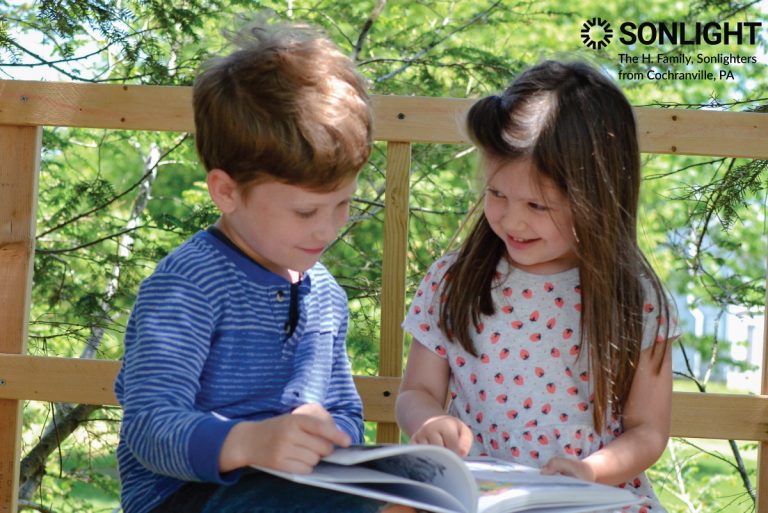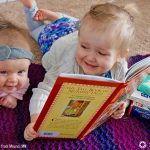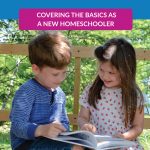When you think about a good education, you think about the three R's: reading, writing and arithmetic. How might you approach these key areas in your children's homeschool education? Here's a basic overview of the foundations you'll want to cover with your very young children.

1. The Three R's: Reading
Let's start with reading, because that is my passion. If you can encourage your children to read, you'll do them a great service. When they read, they
- build their vocabulary
- build imagination
- develop an understanding of history
- begin to grasp what makes good and great writing
I recommend that your children read every day. And even better than just having your children read to themselves? Read out loud to them as well.
There's a unique dynamic that happens when we read aloud to our children. As you share that activity together, you can generate topics to talk about. When you come across issues (like bullying, for example), use that as a jumping off point for meaningful discussions.
I believe that reading also produces a love of learning (especially when compared to dull textbooks). Giving your children a love of learning is a true gift indeed.
How to Teach Reading: Phonics vs. Whole Language
But how should we teach reading? I highly recommend the phonetic method. School systems tend to use whole language reading. For example, students look at the word girl and memorize the meaning of this particular combination of letters. With phonics, they learn to sound out the g, the ir combination, and the final l.
The main reason I think schools use whole language is that it's a little faster and can start kids reading sooner. But a (major) disadvantage is that about a third of the kids just don't get it. With the phonetic method, you prepare kids to read anything that comes their way. I learned through whole language and used to have trouble when I encountered a long word I hadn't seen before. As an added perk, phonics instruction helps kids learn to spell much more effectively.
I recommend that you begin with phonetic readers. Beware of the many whole language readers in the beginning-to-read section of libraries. If you see difficult (non-phonetic) sentences like, "Look at the kangaroo with her baby, a joey" in early readers, run! Your kids won't be able to sound those out.
The most effective way to get your kids to read is to start with phonetic readers that practice the sounds your kids have been learning and allow them to build on what they learn. Start with the easiest letters to hear and distinguish, like f, p, t and s. Look for short vowel sounds as well, since approximately 60% of all words have short vowel sounds. For example, you want words like fad instead of fade.
Sonlight Curriculum is designed around a phonetic approach and assigns phonetic readers that align perfectly with the lessons.
2. The Three R's: Writing
I recommend using dictation as the method for teaching your children how to write. In the beginning, allow them to copy words and sentences. Eventually, you can start to dictate: you speak sentences and they write them down. This is a very easy and effective model to teach writing.
If you use excellent writing as your material for copywork and dictation, your kids will benefit from focusing on solid writing mechanics. They'll naturally practice capitalization, punctuation, and good sentence structure.
I suggest having your children do some form of writing every day. Sonlight schedules this for you!
Handwriting
Since most kids need to learn the physical act of writing, I recommend the program Handwriting Without Tears. It's an engaging program that walks parents through every step in teaching proper handwriting. I don't think the handwriting is particularly gorgeous, but it is very readable and doable.
Spelling
In the first years of my homeschooling journey, I didn't think I needed to teach spelling. I had taught my children phonics—surely that was enough! But then in third grade I had my kids take some standardized tests. The results made it quite clear that I did, in fact, need to teach spelling. Don't make my mistake. Choose All About Spelling or Spelling You See — both excellent programs I wish I had used with my children.
I've found the most effective method for that is to teach words in groups. For example, practice lots of ea words together one week: ear, hear, fear, dear. This technique helps students learn patterns in spelling.
Grammar
The reason we teach grammar is to clean up our writing. If you have your children look for the verb in a sentence they wrote and there isn't one ... they can know it's probably a fragment. I suggest teaching grammar naturally as you walk through life.
- Point out nouns, verbs and adjectives.
- Analyze sentences in your dictation.
- Put a symbol above each word in a sentence noting whether each word is a verb, adjective, adverb, etc.
These day-to-day activities will help solidify the grammar concepts you're teaching.
3. The Three R's: Arithmetic
For math, education experts recommend that young children use lots of manipulatives. These can be anything from white beans to custom-designed products that match your curriculum. Math deals primarily with symbols, and young children often don't understand what symbols mean. Manipulatives connect real-world meaning to the abstract symbols of math.
So if your kids are stuck on a problem and can't figure it out, think of a way to show them in the physical realm what you want them to figure out. For example, give them an intimidating pile of beans and tell your kids to count them. That might seem hard. Next, have them separate the big pile into smaller piles of 10. Then replace each pile of 10 beans with 1 popsicle stick with a 10 written on it. Then count the popsicle sticks to find the total number of beans. This activity will help them understand and remember why we use base 10.
The MathTacular DVDs are particularly great for connecting the real world to potentially difficult math concepts.
Math facts are a necessary skill, so please make sure your kids learn them. (You don't want them counting on their fingers when they get to algebra!)
If you use math and talk through math problems in your daily life, that will reinforce the importance of math in life. You will avoid the the "When will I ever need this?"
So there they are: the 3 Rs. If you do these with your children, you're doing plenty to provide your children with an outstanding education that will serve them well.







